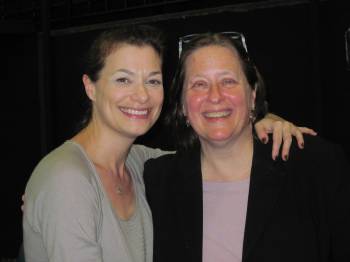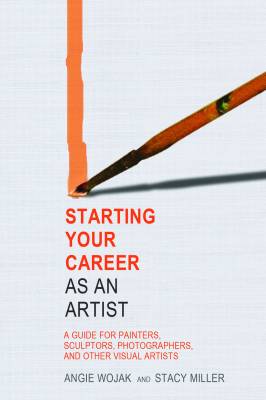By Carolyn Edlund
Angie Wojak and Stacy Miller have recently released a new book with lots of information for those looking to begin or enhance their art careers.

Angie Wojak and Stacy Miller, Courtesy School of Visual Arts
Wojak is the Career Services Director at Columbia University’s School of the Arts, and formerly was Director of Career Services at Parsons School of Design for over a decade. Miller currently teaches in the photography department at Parsons The New School for Design, and has been the director of research and professional development at the College Art Association. Their new book is titled Starting Your Career as an Artist, Artsy Shark interviewed them recently about their expertise and how artists can benefit from their new publication.
AS: One networking strategy you recommend is using your alma mater in your efforts. What suggestions do you have for this?
W&M: Artists often don’t realize it, but universities may offer alumni access to the following:
- Alumni Networks: Many colleges offer graduates access to online databases of fellow alumni. This can be an essential networking tool both for reconnecting with fellow classmates, and also for reaching out to new contacts in a variety of industries.
- Alumni Mixers and free or discounted access to special events: These can be great opportunities for networking and building skills and knowledge about the field.
- Social media connections such as LinkedIn, Facebook, Twitter: Most universities offer these. They are good ways to stay connected with a community -or find a new one related to your art work.
- Volunteer Opportunities: Consider offering to assist with planning, or serve on alumni committees to network while giving back to the community. Offer to be a guest speaker or participate in a panel discussion. It’s an effective way to build your public profile and expand your network.
AS: In your book, you interview over 30 artists and art professionals about their careers. What are some characteristics you notice successful artists have in common?
W&M: While interviewing artists, gallery owners, curators, arts administrators and educators, we noticed patterns emerge for success in the field. All agreed success is ultimately self-determined. The consensus is that to be a successful artist, you must figure out a way to make art, no matter what. Get in the studio everyday, and work on building your own unique community of fellow artists and advocates.
Mentors are critical for success. No one does it on their own. Be fearless about what you want your work to do. Appropriately, there are more different types of communities supporting the artists and more different ways to support your art work than ever before. The trick is to know what you want. The colorful art critic Jerry Saltz reminds all artists to keep it simple. Keep your life simple in order to maximize your output in the studio!
AS: Burnout is an issue that artists sometimes face. What are your ideas for rejuvenating the creative spirit?
W&M: One thing we’d like readers to take from our book is that building community to sustain your work and spirit is the most essential activity, and one that many artists undervalue or totally overlook. This is a sincere, life and art-affirming action that you must do or you run the risk of isolating yourself and burning out.
Surround yourself with a supportive network of mentors, friends, family, and colleagues. Schedule a studio visit, lunch, or coffee meeting at least once a week. Join the community where your goals are and network with that target community in mind. Continuously ask yourself if you are still learning and growing; review whether your life/work is balanced properly.
AS: You suggest that artists looking to sustain their studio practice might consider teaching to supplement their income. Could you address this?
W&M: Teaching can add another important dimension to your work. It can inspire and feed it. Watching students change and grow is a great satisfaction for a professional and it creates community. Here are some good basic questions to ask yourself in order to find out if you should consider a career in teaching:
- Are you someone who likes to work with people?
- Are you comfortable working in an institution that has numerous protocols and often well-defined systems?
- Do you like to lecture, critique and advise? Do you like public speaking?
- Can you take instruction from a superior? Can you take direction easily?
- Can you juggle two hats at once: teaching and your studio work?
- Do you enjoy interacting and exchanging ideas with adults, youth or children?
- Do you enjoy watching people grow and change?
AS: What inspired you to write the book?
The impetus for writing the book was our shared experience in serving art and design students’ career development needs. Between us we’ve spent over 20 years teaching and mentoring students and alumni working in the arts. We saw many artists facing the same hurdles: emotional, financial, issues with relationship building, networking, long term planning, getting their mind/body out of the studio, having realistic expectations, and so on.
It is important to understand that making the work is less than half the battle. We found there was little knowledge of the basics of marketing their work themselves and how to build a community to sustain themselves in every way. Artists need to be entrepreneurial and proactive and business-minded rather than turning inward and rejecting the business and social side of their practice. How to balance all these aspects interested us, and we sought to ask professionals in the field what they thought of these issues.



[…] the original post: Starting Your Career as an Artist/Interview with the Authors Filed Under: Guest Articles, Inspiration & Motivation Tagged With: art careers, business of […]